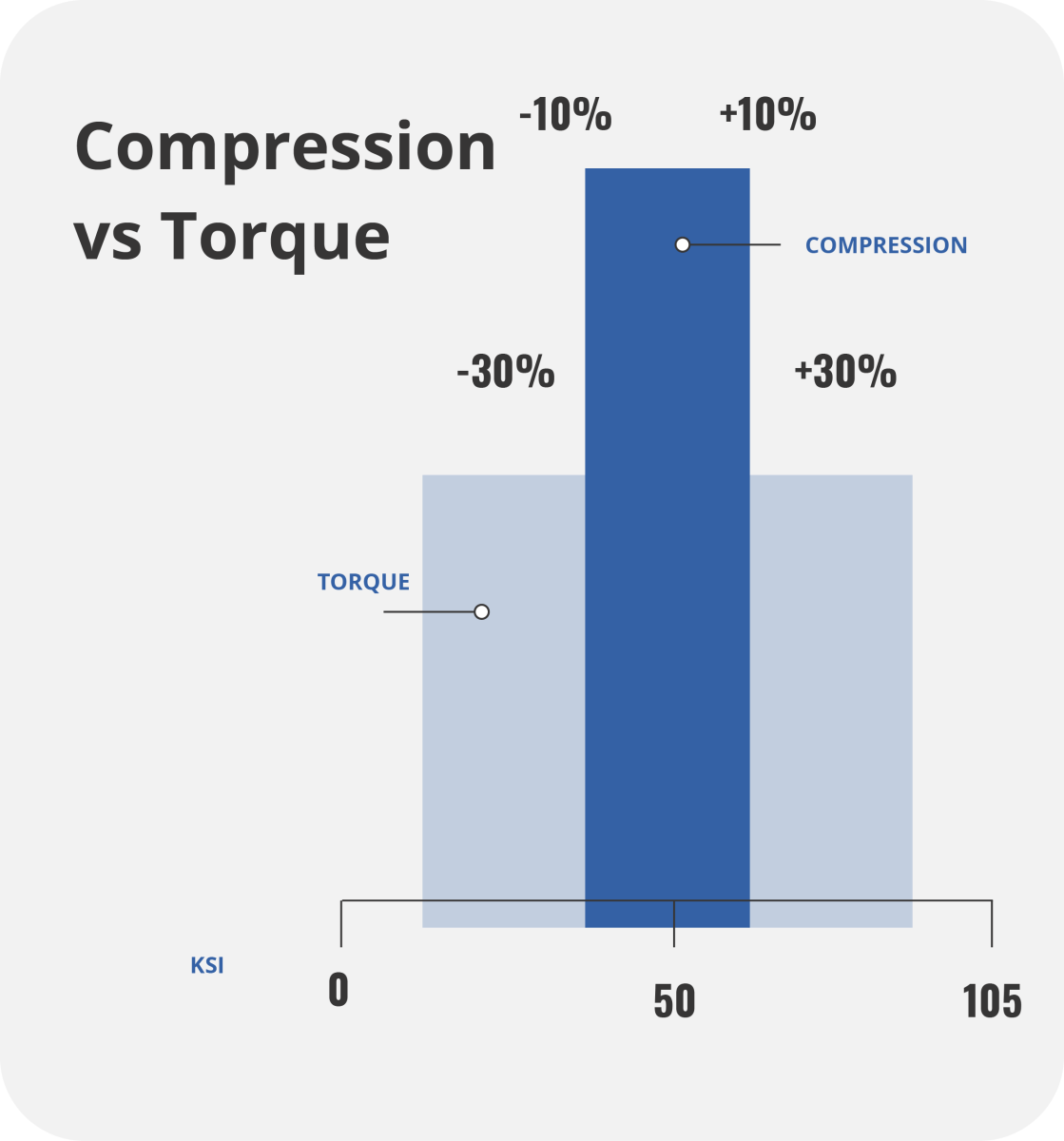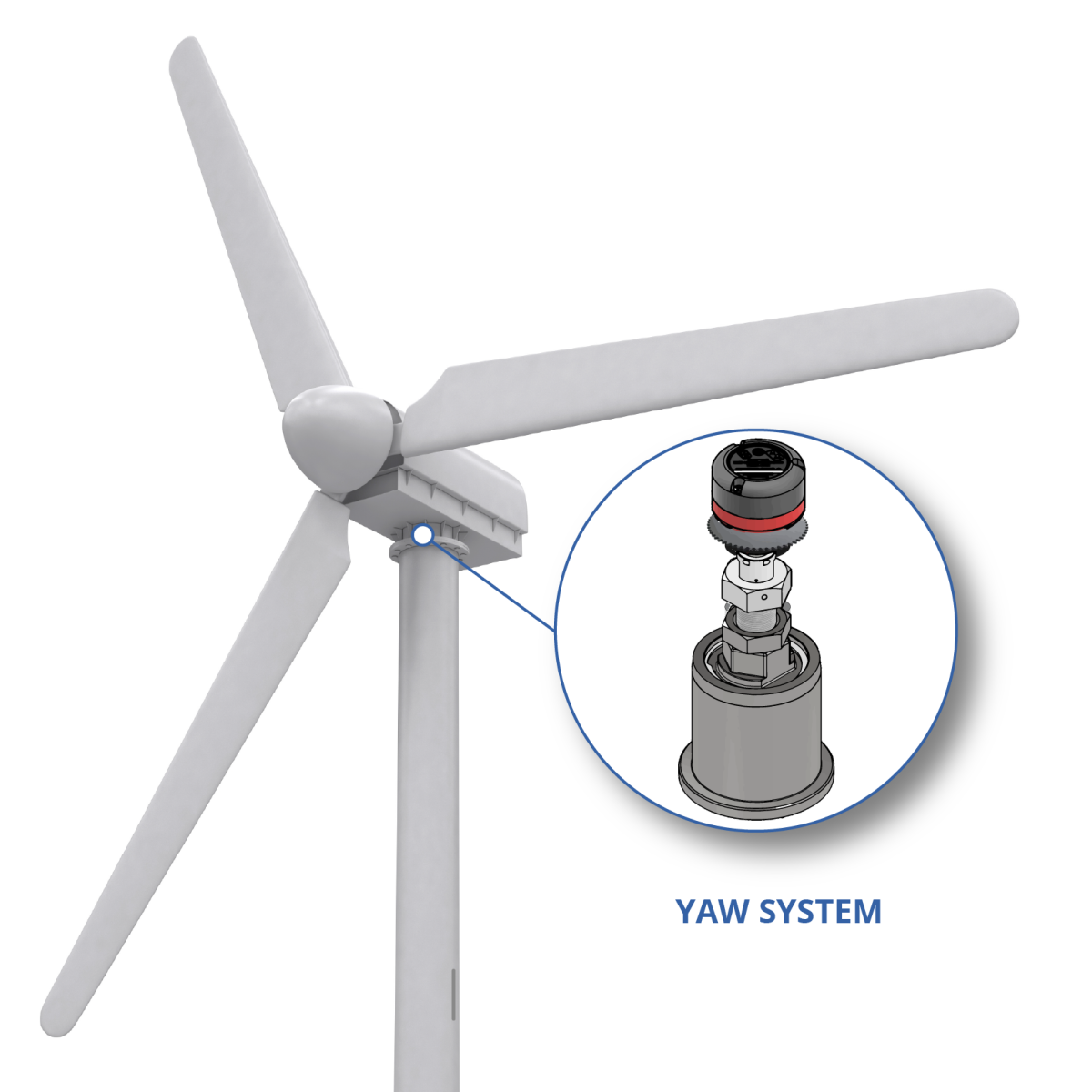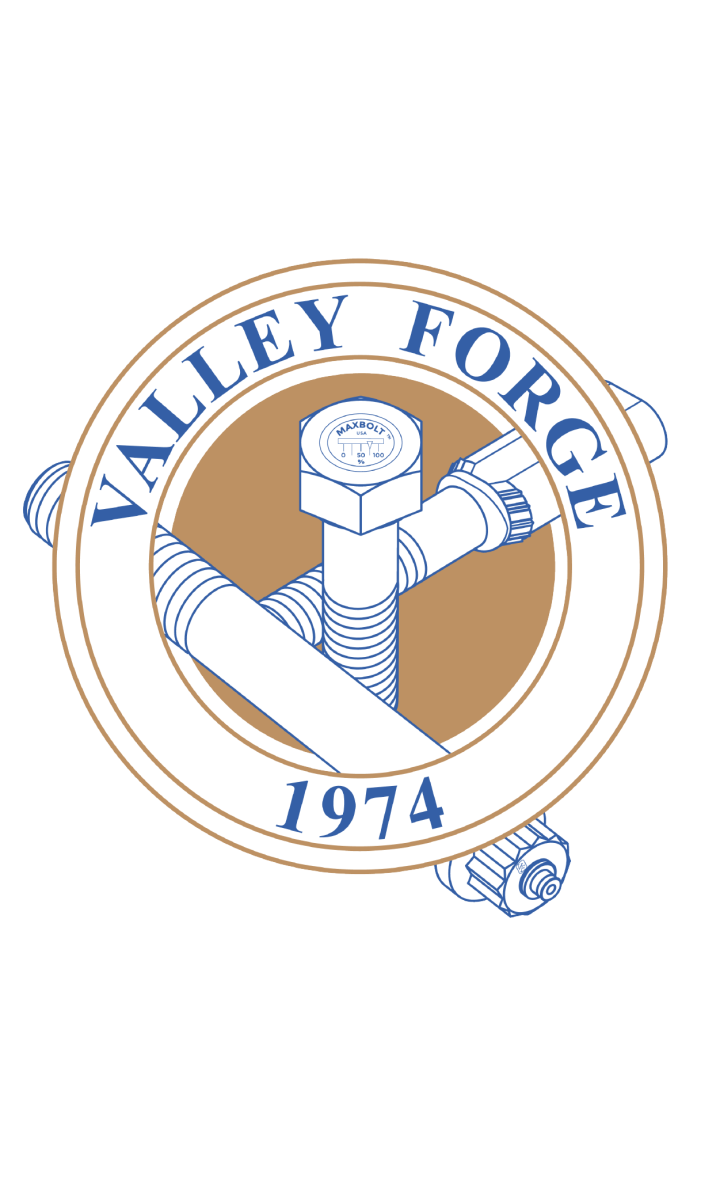Introducing Compression Based Load Monitoring for Wind Turbines
From the World Leader of Load Indicating Fasteners
Catastrophic joint failure has been at the epicenter of some of the wind industries’ most costly and hazardous breakdowns. Thus, the need for accurate, constant, and repeatable controlled bolting has been on the rise in both traditional and alternative energy sectors.
An important aspect of wind turbines is the yaw system. The yaw system, located between the nacelle and the tower, is responsible for orienting the turbine in the direction of the wind. As the turbine rotates, the system needs to slow and eventually stop when oriented correctly. This is done by using a yaw brake to apply a compressive load and impart friction onto the yaw bearing. Both active and passive yaw systems use this technique to prevent unwanted rotation and oscillation of the wind turbine.
In passive yaw systems, a common way to apply this compressive load is through bolting. By threading a bolt into a housing and compressing the bottom of the bolt against a brake piston, the piston imparts a compressive force onto the yaw bearing. There are 12 to 18 housings around the nacelle in a single wind turbine. These standard bolts are all loaded in the same way based on an installation procedure using a torque value. This installation method, also used in maintenance, attempts to relate the torque, and turn the fastener into a quantifiable load.
The traditional procedure can vary by up to +/- 30% of target load making it incredibly unreliable and inaccurate. It also depends on external conditions such as friction and condition of the fastener threads, both of which are difficult to control. As clean energy becomes less subsidized and wind farms reach maturity, key decision makers in the energy sector will continue to see an increased need for accurate tension and compression monitoring for both safety and cost management.

The First Compression-based Load Monitoring Fastener of its Kind
Wind turbines which use standard fasteners for their passive yaw braking system rely heavily on the unknown real compression forces being applied to the yaw bearing at each brake piston. For example, during installation and/or maintenance, each of the 12-18 standard fasteners could be applying a different load (within +/-30%) at various places around the yaw bearing. Friction is imparted unevenly into the system which can increase the wear rate of the brake pistons while in operation. Over time, the constant reorientation to face the wind causes the brake pistons to wear, and not always evenly. The component wear decreases the compressive force and friction acting on the yaw bearing and in turn, increases wear of the components. The process leads to an uncertain amount of load being applied by each yaw puck during operation. The cycle continues and worsens until it is addressed during maintenance by retorquing the bolts to reapply enough compression to the yaw bearing. Eventually, the components wear and fatigue to the point of requiring replacement. Currently, maintenance for retorquing and component replacement is performed to prevent sudden or unexpected failure. These maintenance sessions are currently time-based versus need based.

From our Partners
“ WECS is excited to be working with Valley Forge & Bolt Mfg. Co. on the New Yaw System Compression Gauge, and we are prepared to start field testing at local wind sites soon.” Says Denny McKissic, V.P. O&M WECS Renewables.
While there are no bolts that tighten themselves yet, the tension-based and compression-based monitoring system of Valley Forge load-indicating fasteners are a reality, offering far greater accuracy than torque-based methods. The original SPC4® is accurate to within a staggering ±5 percent of minimum yield of the fastener, and ASTM F2482 compliant, now bolted joints can tell you their exact percentage of load at any time. The SPC4® Load Indicating Compression Bolt (Pat. Pend.) is the latest addition to our load indicating family designed to address the problems associated with traditional yaw systems.
Loading the 12-18 yaw pucks with SPC4® Load Indicating Compression Bolts (Pat. Pend.) replaces the current inaccurate installation and retorquing procedure currently in place with improved accuracy using our compression-based load indicating methods. With the SPC4® Load Indicating Compression Bolt (Pat. Pend. ) you are now able to achieve the desired load and easily read the load being applied by the fastener by attaching an SPC4® load monitor/reader to the fastener’s datum disc. Lastly, by pairing this system with our remote tension monitoring meters, you can now monitor load remotely without ever climbing the tower.
From the makers of the SPC4® and the Maxbolt ®
Valley Forge & Bolt Mfg. Co. sources solutions to some of the world’s most complex fastening issues. Inquire today to learn more about our custom and standard solutions or visit us online to learn more about the SPC4® Load Indicating Compression Bolt (Pat. Pend.).
https://www.vfbolts.com/products/spc4compression-bolt











